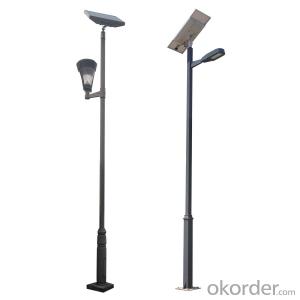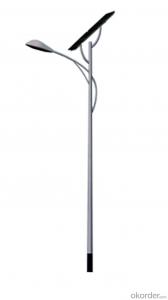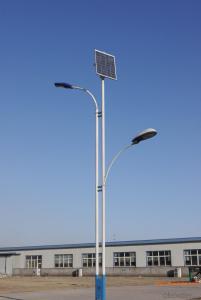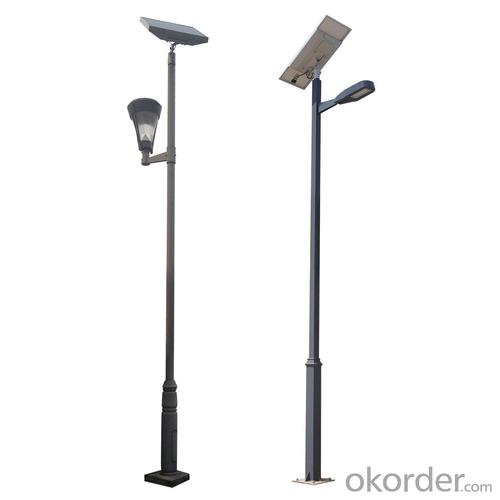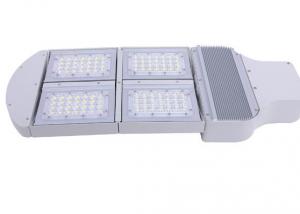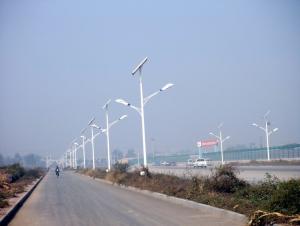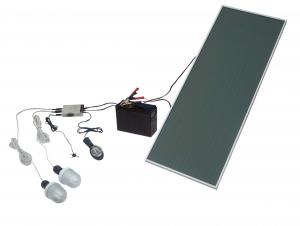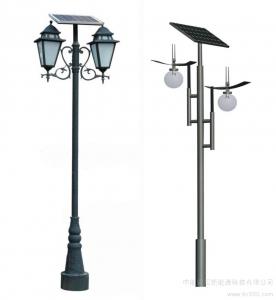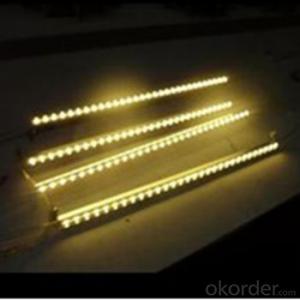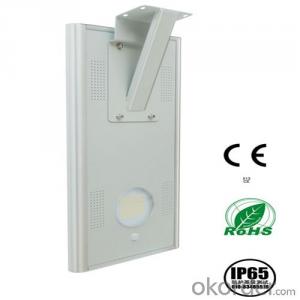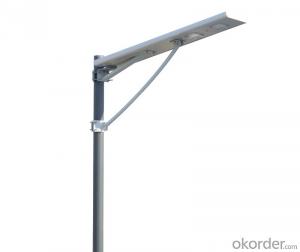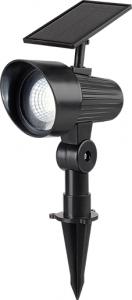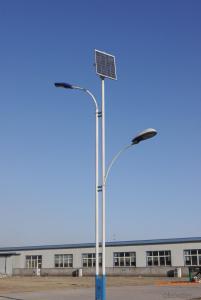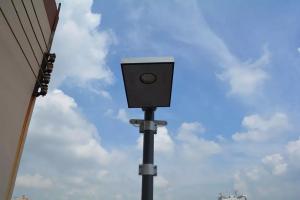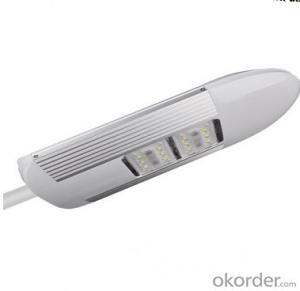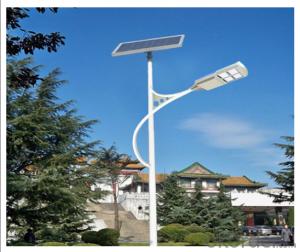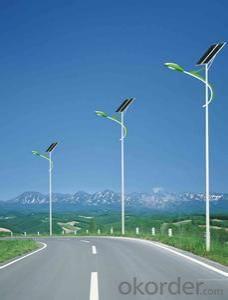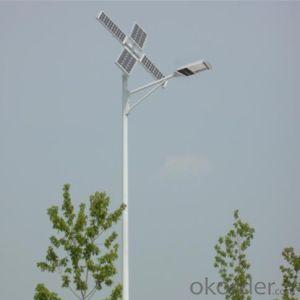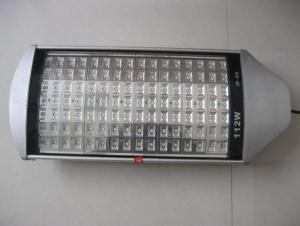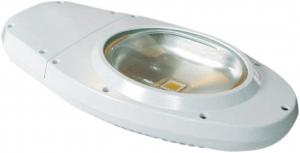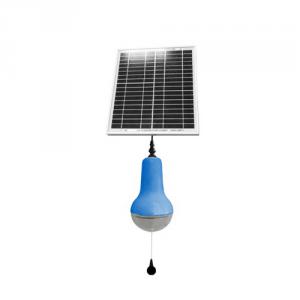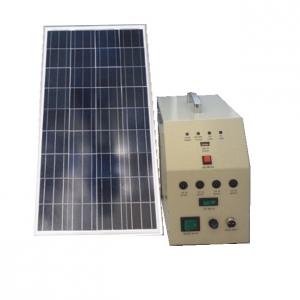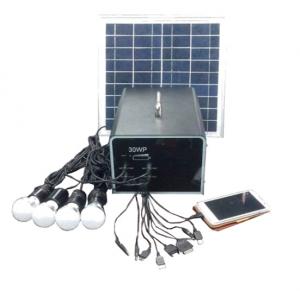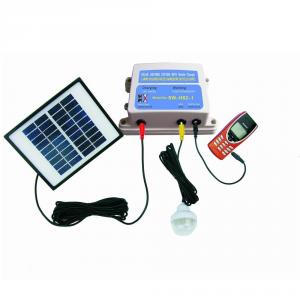Solar Light Caps for 4x4 Posts - Solar Street Light Y2
- Loading Port:
- Ningbo
- Payment Terms:
- TT or LC
- Min Order Qty:
- 1 set
- Supply Capability:
- 5000 set/month
OKorder Service Pledge
OKorder Financial Service
You Might Also Like
1, Product desciption
Inverter circuits designed to produce a variable output voltage range are often used within motor speed controllers.
The DC power for the inverter section can be derived from a normal AC wall outlet or some other source. Control and feedback circuitry is used to adjust the final output of the inverter section which will ultimately determine the speed of the motor operating under its mechanical load.
Motor speed control needs are numerous and include things like: industrial motor driven equipment, electric vehicles, rail transport systems, and power tools. (See related: variable-frequency drive ) Switching states are developed for positive, negative and zero voltages as per the patterns given in the switching Table.
The generated gate pulses are given to each switch in accordance with the developed pattern and thus the output is obtained.
Solar power is energy from the sun. "Solar" is the Latin word for "sun" and
And Powerful source of energy. Without it, there will be no life.
Solar energy is considered as a serious source of energy for many years
of the vast amounts of energy that is made freely available, if harnessed by modern technology.
A magnifying glass can be used to heat up a small amount of water.
The short piece of copper tube is sealed at one end and filled with water.
And magnifying glass is then used to warm up the pipe.
Using more than one magnifying glass will increase the temperature more rapidly.
2, Features of the product
Inverters convert low frequency main AC power to higher frequency for use in induction heating.
To do this, AC power is first rectified to provide DC power. The inverter then changes the DC power to high frequency AC power. Due to the reduction in the number of DC Sources employed, the structure becomes more reliable and the output voltage has higher resolution due to an increase in the number of steps so that the reference sinusoidal voltage can be better achieved.
This configuration has recently become very popular in AC power supply and adjustable speed drive applications. This new inverter can avoid extra clamping diodes or voltage balancing capacitors. There are three kinds of level shifted modulation techniques, namely:
The first thing to figure out is the length of road in need of street lights.
This can be a small entrance road only a couple hundred of feet long to miles of streets through an area. Does the area currently have any type of lighting available.
What is the reason for needing street lights in this area
Is the electrical grid already nearby or would you need to call in the power company to bring in electrical lines.
If the electric needs to be brought to the area, how much is this going to cost? Depending on how far the grid electric is from the location of the needed lighting, this can be quite expensive.
How much lighting is needed on the street? Do the lights need to be dark sky compliant.
Do the street lights need to run from dusk to dawn or for only a specified number of hours at night.
Are the street lights able to dim in the middle of the night and still provide enough lighting.
These questions need to be answered before you can decide on how many lights you will need to complete the project.
3, Detailed Specification
| ||||||||||||||||||||||||||||||||||||||||||||||||
4, Product Image
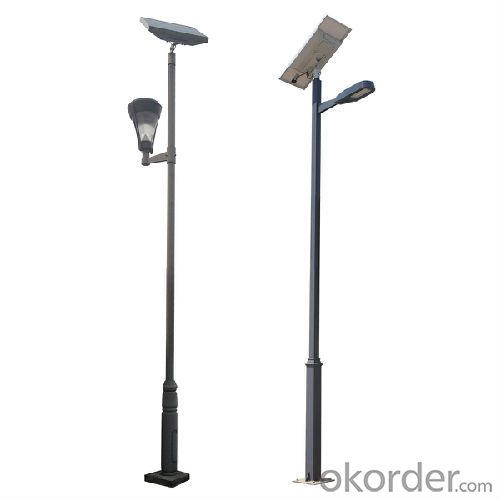
- Q: Can solar lights be used as street lights?
- Yes, solar lights can be used as street lights. Solar-powered street lights are becoming increasingly popular as they offer a sustainable and cost-effective solution for illuminating streets without relying on traditional electrical grids. These lights harness sunlight during the day to charge their batteries and automatically illuminate the streets at night, providing a reliable and environmentally friendly source of lighting for public areas.
- Q: Can solar lights be used for public squares or plazas?
- Public squares and plazas can definitely benefit from the use of solar lights. In fact, these sustainable and energy-efficient lighting solutions are increasingly popular in urban areas worldwide. By effectively illuminating public spaces while reducing electricity costs and environmental impact, solar lights offer numerous advantages. The installation process is hassle-free, as they don't require extensive wiring or infrastructure modifications. During the day, solar lights harness solar energy, storing it in batteries to power the lights at night. This makes them an ideal choice for public areas that need illumination after sunset. Moreover, solar lights are available in a variety of designs and styles, allowing them to seamlessly blend with the squares or plazas' aesthetics. Whether it's functional streetlights or decorative pathway lights, solar lighting options are versatile and can enhance the overall ambiance and safety of public spaces.
- Q: How do solar lights impact property values?
- There are several ways in which solar lights can positively affect property values. To begin with, they offer enhanced security and safety for the property, which is an appealing aspect for potential buyers. Houses that are well-lit are less likely to be targeted by burglars or vandals, giving homeowners peace of mind and making the property more desirable. Furthermore, solar lights contribute to energy efficiency and sustainability, which is becoming increasingly important to homebuyers. As people become more environmentally conscious, they look for eco-friendly properties that minimize their carbon footprint. Solar lights not only decrease electricity consumption but also harness renewable energy, making them an attractive feature for environmentally-minded buyers. In addition, solar lights can elevate the visual appeal of a property. Strategically placed solar lights can highlight the architecture, landscape, and pathways, creating a visually pleasing atmosphere. This can greatly improve the overall appearance of the property, drawing in potential buyers and potentially increasing its market value. Moreover, the installation of solar lights can also bring financial benefits to homeowners. By utilizing solar energy, homeowners can reduce their electricity bills, resulting in long-term savings. This cost-saving aspect can be a strong selling point, especially in areas with high electricity costs. In conclusion, solar lights have the potential to positively impact property values through increased security, energy efficiency, aesthetic appeal, and cost savings. As the demand for sustainable and eco-friendly homes continues to grow, solar lights can play a significant role in attracting buyers and raising property values.
- Q: Can solar lights be used in areas with high wind conditions?
- Yes, solar lights can be used in areas with high wind conditions. However, it is important to choose solar lights that are specifically designed to withstand strong winds. These lights are typically made with durable materials and have a sturdy construction to ensure they stay in place even during windy conditions. Additionally, some solar lights may come with additional features like ground stakes or mounting brackets that help to secure them firmly to the ground or other surfaces. It's also worth noting that regular maintenance and proper installation can further enhance the stability of solar lights in high wind areas.
- Q: Are solar lights resistant to fire or overheating?
- Yes, solar lights are generally resistant to fire and overheating due to their design and use of low voltage, renewable energy sources.
- Q: Can solar lights be used in areas with heavy shade or tree cover?
- Solar lights may not be suitable for areas with heavy shade or tree cover as they require direct sunlight to charge their batteries. The shade or tree cover can significantly limit the amount of sunlight reaching the solar panels, reducing their effectiveness.
- Q: Do solar lights have adjustable lighting modes?
- Indeed, numerous solar lights possess the ability to adjust their lighting modes. Steady on, flashing, and dimming are among the typical lighting modes found in these lights. By offering adjustable modes, users are able to personalize the lighting to cater to their specific requirements or desires. Moreover, certain solar lights even incorporate motion sensors that trigger a brighter light when detecting movement, thus ensuring heightened security and energy efficiency.
- Q: How do solar lights save energy?
- Solar lights save energy by harnessing the sun's energy through solar panels and converting it into electricity. This eliminates the need for traditional power sources, such as electricity grids or batteries, resulting in significant energy savings.
- Q: Can solar lights be used for outdoor sculptures or art installations?
- Yes, solar lights can be used for outdoor sculptures or art installations. Solar lights are a great eco-friendly option for illuminating outdoor artwork as they harness energy from the sun and do not require any external power source. They can provide a unique and attractive lighting effect, enhancing the visual appeal of sculptures or art installations during nighttime, while being cost-effective and easy to install.
- Q: Can solar lights be used for road safety or traffic control?
- Indeed, road safety and traffic control can be achieved by utilizing solar lights. These lights offer a sustainable and cost-effective method to enhance road visibility and ensure the safety of motorists, pedestrians, and cyclists. Installation of solar lights in various locations such as crosswalks, intersections, roundabouts, and construction zones is possible. Solar lights are equipped with photovoltaic panels that absorb sunlight during the day. This absorbed sunlight is converted into electricity and stored in batteries. The stored energy is then used to power the lights at night, providing continuous illumination. Since solar lights rely on solar power, there is no need for external power sources or wiring, making installation and maintenance hassle-free. The use of solar lights for road safety and traffic control brings several advantages. Firstly, these lights offer improved visibility, especially in areas with limited or no access to electricity. They can be strategically placed to mark hazardous areas, curves, or intersections, alerting drivers to potential dangers and reducing the risk of accidents. Moreover, solar lights can be programmed to flash or change colors, serving as warning signals for drivers. For example, in school zones, solar-powered flashing lights can indicate reduced speed limits during specific hours. Similarly, at pedestrian crosswalks, solar lights can flash when a pedestrian activates the crossing signal, notifying drivers to stop and yield. Another benefit of using solar lights for road safety is their ability to function independently during power outages or emergencies. Even during a blackout, solar lights continue to operate, ensuring critical areas remain illuminated and visible to drivers. Furthermore, solar lights contribute to environmental sustainability by reducing reliance on traditional grid electricity and minimizing carbon emissions. They align with global efforts to combat climate change and encourage sustainable development. In conclusion, solar lights are an efficient solution for road safety and traffic control. Their ability to harness solar energy, ease of installation, and low maintenance make them a practical and sustainable choice. By enhancing visibility, providing warning signals, and functioning independently during emergencies, solar lights contribute to creating safer roadways for everyone.
Send your message to us
Solar Light Caps for 4x4 Posts - Solar Street Light Y2
- Loading Port:
- Ningbo
- Payment Terms:
- TT or LC
- Min Order Qty:
- 1 set
- Supply Capability:
- 5000 set/month
OKorder Service Pledge
OKorder Financial Service
Similar products
Hot products
Hot Searches
Related keywords
